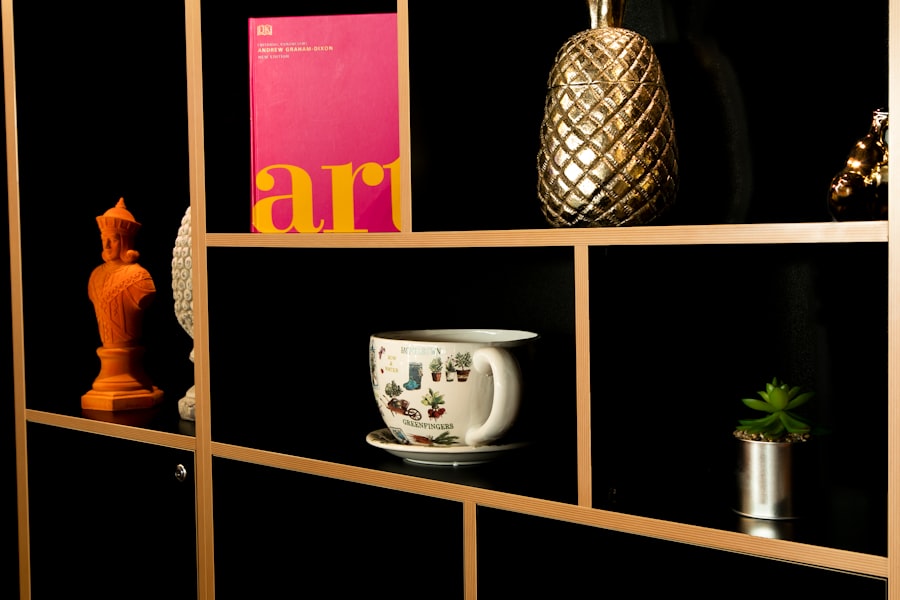In the rapidly evolving digital landscape, modern website design has become a critical component for businesses and individuals alike. The internet is no longer just a platform for information dissemination; it has transformed into a dynamic space where user experience, aesthetics, and functionality converge. As technology advances, so do the expectations of users who demand not only visually appealing websites but also seamless interactions and personalized experiences.
This shift has led to the emergence of various design philosophies and methodologies that prioritize user engagement and satisfaction. The importance of modern website design cannot be overstated. A well-designed website serves as a digital storefront, often being the first point of contact between a brand and its audience.
It is essential for establishing credibility and trust, as users are more likely to engage with a site that is visually appealing and easy to navigate. Furthermore, with the increasing reliance on mobile devices for internet access, the design must cater to diverse screen sizes and resolutions. This article delves into the key elements that define modern website design, exploring trends such as minimalist aesthetics, mobile-first strategies, interactive experiences, and the integration of advanced technologies.
Key Takeaways
- Modern website design focuses on creating visually appealing and user-friendly websites to enhance the overall user experience.
- Minimalist design and clean layouts are popular trends in modern website design, emphasizing simplicity and easy navigation.
- A mobile-first approach and responsive design are essential for ensuring that websites are accessible and functional across various devices and screen sizes.
- Interactive and engaging user experiences, such as animations and micro-interactions, are used to captivate and retain user attention.
- Personalized and dynamic content tailored to individual user preferences is becoming increasingly important in modern website design.
Minimalist Design and Clean Layouts
Key Elements of Minimalist Design
Websites that embrace this philosophy often feature straightforward navigation menus, clear calls to action, and a well-organized layout that guides users through their journey.
Real-World Examples of Minimalist Design
One notable example of minimalist design is the website for Apple. The clean layout emphasizes product images and key information without overwhelming visitors with excessive text or graphics. This approach not only highlights the products but also reinforces Apple’s brand identity as a leader in innovation and simplicity. Similarly, the online portfolio of designer Adham Dannaway showcases a minimalist aesthetic that allows his work to take center stage.
The Benefits of Minimalist Design
By eliminating distractions, these websites create an environment where users can engage with content more effectively, leading to higher conversion rates and improved user satisfaction.
Mobile-First Approach and Responsive Design
As mobile devices continue to dominate internet usage, adopting a mobile-first approach has become imperative for modern website design. This strategy involves designing websites primarily for mobile devices before scaling up to larger screens. By prioritizing mobile users, designers can ensure that their sites are optimized for touch interactions, smaller displays, and varying network conditions.
This approach not only enhances user experience but also aligns with search engine optimization (SEO) practices, as search engines like Google prioritize mobile-friendly sites in their rankings. Responsive design is a key component of the mobile-first approach, allowing websites to adapt seamlessly to different screen sizes and orientations. This adaptability is achieved through fluid grids, flexible images, and CSS media queries that adjust the layout based on the user’s device.
A prime example of responsive design is the website for The Guardian, which automatically adjusts its layout depending on whether it is accessed from a smartphone, tablet, or desktop computer. This ensures that users receive an optimal viewing experience regardless of their device, ultimately leading to increased engagement and retention.
Interactive and Engaging User Experience
In an age where attention spans are dwindling, creating an interactive and engaging user experience is crucial for capturing and retaining visitors’ interest. Modern website design leverages various interactive elements such as quizzes, polls, animations, and gamification techniques to encourage user participation. These features not only make the browsing experience more enjoyable but also foster a sense of connection between the user and the brand.
For instance, websites like Duolingo employ gamification strategies to enhance user engagement in language learning. By incorporating elements such as points, levels, and rewards, Duolingo transforms the learning process into an interactive game that motivates users to return regularly. Similarly, e-commerce platforms like ASOS utilize interactive product displays that allow users to view items from multiple angles or even try them on virtually using augmented reality technology.
These interactive features not only enhance user experience but also drive conversions by making the shopping process more immersive and enjoyable.
Personalized and Dynamic Content
Personalization has emerged as a cornerstone of modern website design, enabling brands to tailor content to individual users based on their preferences, behaviors, and demographics. By leveraging data analytics and user insights, designers can create dynamic content that resonates with visitors on a personal level. This approach not only enhances user satisfaction but also fosters brand loyalty by making users feel valued and understood.
A prime example of personalized content can be seen in streaming services like Netflix. The platform utilizes sophisticated algorithms to analyze user viewing habits and preferences, curating tailored recommendations that appear on each user’s homepage. This level of personalization not only keeps users engaged but also encourages them to explore new content they may not have discovered otherwise.
Similarly, e-commerce sites like Amazon employ personalized product recommendations based on users’ browsing history and previous purchases, significantly increasing the likelihood of conversion.
Integration of Animation and Micro-interactions
The integration of animation and micro-interactions into modern website design has revolutionized how users interact with digital content. Animation can serve various purposes, from guiding users through a process to providing visual feedback on their actions. Micro-interactions—subtle animations triggered by user actions—enhance usability by providing immediate feedback and making interactions feel more intuitive.
For example, when a user hovers over a button on a website, a subtle animation can indicate that the button is clickable or provide additional information about its function. Websites like Slack utilize micro-interactions effectively; when users send messages or perform actions within the app, small animations provide visual cues that enhance the overall experience. These animations not only make interactions more enjoyable but also help users understand how to navigate the site or application more effectively.
Accessibility and Inclusive Design
As digital spaces become increasingly integral to daily life, ensuring accessibility in website design has become paramount. Inclusive design focuses on creating websites that cater to all users, including those with disabilities or impairments. This involves adhering to established guidelines such as the Web Content Accessibility Guidelines (WCAG), which provide recommendations for making web content more accessible.
An accessible website may include features such as alternative text for images, keyboard navigation options, and adjustable font sizes to accommodate users with visual impairments. A notable example is the website for the American Foundation for the Blind (AFB), which prioritizes accessibility by providing resources and tools designed specifically for individuals with vision loss. By implementing inclusive design principles, brands not only expand their reach but also demonstrate social responsibility by ensuring that all users can access their content.
Utilizing AI and Machine Learning in Website Design
The integration of artificial intelligence (AI) and machine learning into website design is transforming how designers create user experiences. These technologies enable designers to analyze vast amounts of data quickly, allowing for more informed decision-making regarding layout, content placement, and user engagement strategies. AI-driven tools can automate repetitive tasks such as A/B testing or content optimization, freeing designers to focus on more creative aspects of their work.
For instance, platforms like Wix utilize AI-powered design assistants that help users create websites tailored to their specific needs by analyzing their preferences and industry trends. Similarly, machine learning algorithms can analyze user behavior in real-time to optimize content delivery based on individual preferences or browsing patterns. This level of personalization not only enhances user experience but also allows brands to stay ahead of trends by adapting their strategies based on data-driven insights.
In conclusion, modern website design encompasses a multitude of elements that work together to create engaging, functional, and accessible digital experiences. From minimalist aesthetics to personalized content delivery and the integration of advanced technologies like AI, these components are essential for meeting the evolving expectations of users in today’s digital landscape. As designers continue to innovate and adapt to new trends, the future of website design promises even more exciting possibilities for enhancing user engagement and satisfaction.
FAQs
What are some modern website design ideas?
Some modern website design ideas include using bold and vibrant colors, incorporating interactive elements such as animations and videos, utilizing asymmetrical layouts, and prioritizing mobile responsiveness.
How can I make my website design more user-friendly?
To make your website design more user-friendly, consider simplifying navigation, optimizing loading times, ensuring readability with clear typography, and providing clear calls to action.
What are some current trends in website design?
Current trends in website design include dark mode themes, minimalist design with ample white space, 3D elements and illustrations, and the use of micro-interactions to enhance user engagement.
How can I ensure my website design is visually appealing?
To ensure your website design is visually appealing, focus on creating a cohesive visual identity with consistent branding, high-quality imagery, and a clean and modern aesthetic. Additionally, consider incorporating visual hierarchy to guide the user’s attention.
What are some best practices for modern website design?
Best practices for modern website design include prioritizing accessibility and inclusivity, optimizing for search engines (SEO), integrating social media and sharing features, and regularly updating and maintaining the website to ensure functionality and security.


